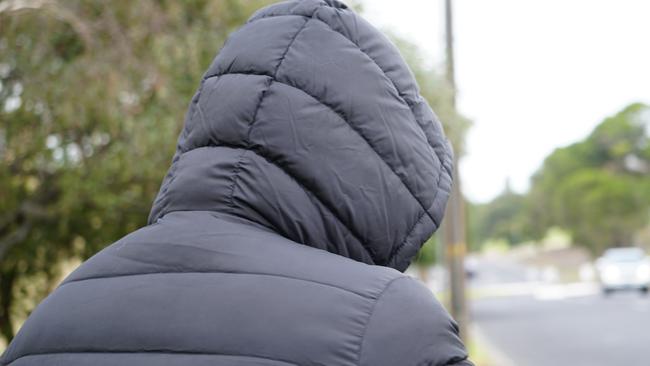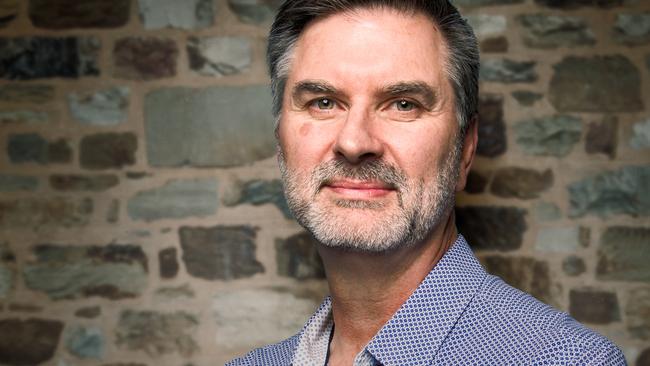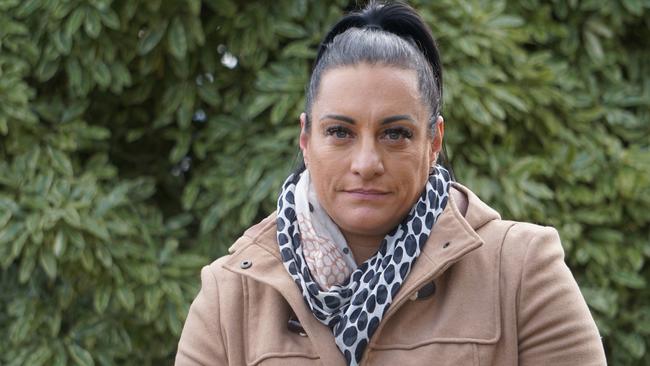Regional rental crisis forces family of nine to live in camper trailer during freezing winter
Every day they wait for the call that there’s finally a roof over their head, out of the freezing cold. Meanwhile, mum cooks dinner on the tailgate, hoping.
Local
Don't miss out on the headlines from Local. Followed categories will be added to My News.
For months a South-East mum of seven has cooked dinner on a gas stove top on the tailgate before tucking in her children in on the canvas floor of their camper trailer.
Amanda*, her partner Luke* their children 14, seven, six, four, two and six months have been homeless and separated from their eldest daughter, 16, since March 21.
The family was renting a falling-apart farmhouse when the owners wanted them out.

They applied for every private rental in Naracoorte, called around 20 farmers searching for empty houses, but they came up short.
“At the time it was upsetting, now it’s just getting used to the fact that no one really wants such a large family in their home,” Amanda said.
After securing a bed in a boarding house for their 16-year-old, they spent weeks between the trailer in Kalangadoo, a friend’s Glencoe rumpus room, crammed into a one-bedroom at a relative’s house, and are now settled in a Mount Gambier front yard.
It’s a tight squeeze with a queen bed, no fridge, and until recently no beds for the kids.
As winter hit, Luke’s boss stepped in, organising a cabin at a caravan park with a heater, television and kitchen.
“He paid for 11 nights accommodation for us to get us out of the weather for the kids,” Amanda said.

“It was luxury, a luxury to be able to cook and actually buy food and put it in the fridge and freezer.”
The family spent their last night in the cabin on Wednesday and made their way ‘home’ with Amanda’s biggest fear – finding a house – returning.
For the family of nine it is difficult to make ends meet on one income, a parenting and family tax payment with Luke working ad hoc seasonal work in the potato fields and pine plantations.
After petrol and food, Amanda said self-funding accommodation in the current rental market was out of budget.
They have applied through Unity Housing in Millicent and meet weekly with ac.care in Mount Gambier.
Despite meeting with the services, Amanda has lost hope.
“They keep on telling us that they have no houses available or that with us being such a big family that it’s overcrowded,” she said.
“It’d be good to be in a house, to wake up one morning, someone go ‘here you go, here’s a house’.”
*Names changed to protect the identity of the children.
WHY CAN’T THEY FIND A HOME?
Sadly, Amanda and her family aren’t alone. There are more people in need of affordable housing than can be accommodated in the South-East.
The flow-on impact of a rental crisis has pushed up prices, put pressure on emergency housing, creating a backlog and left local agencies few options to offer those at risk of homelessness.
ac.care chief executive Shane Maddocks said it was doing its best to support those at risk of losing their tenancies to avoid becoming homeless, but were struggling to find properties.

“Sadly, the lack of affordable housing in Mount Gambier and other areas across regional South Australia is increasingly pushing people to the brink of homelessness at an alarming rate,” he said.
“Our staff in the Limestone Coast, Riverland and Murraylands are seeing people on a daily basis who are struggling to find or maintain a tenancy, leading to hardships no Australian should be facing, especially during winter.”
While emergency relief, financial counselling and other support services made a difference, spending on government housing had not kept up with the growing demand and Mr Maddocks said more needed to be done.
“In the longer term we need more government investment in public and community housing,” he said.
“The rate of Jobseeker and other payments must be increased to a more sustainable rate to avoid people falling into the poverty trap and being at risk of homelessness and unable to secure a brighter and more sustainable future.”
THEY AREN’T ALONE
Kate Amoroso has been there. Around 7 years ago she spent months living in a women’s shelter before being elected to Mount Gambier Council.
“After being a homeowner, then through life circumstances and choices, I found myself homeless,” Ms Amoroso said.
“I am so grateful for the love and backing of my family because without them I would be sitting on council (but) probably still be homeless.

“In the current rental market, on my income the affordability would be out of my reach.”
Ms Amoroso got her life back on track and now uses her experiences to advocate for others who find themselves in similar circumstances.
She said the community may not see a spike of people living on the street but the new wave of hidden homelessness experienced by families such as Amanda and Luke’s was heartbreaking.
“I was absolutely mortified that a family living in a tent in someone’s yard in zero-degree temperatures with young children was not considered homeless and while they qualify for housing there is simply none available,” she said.
Ms Amoroso said social housing levels in regional areas had reached crisis point.
“This is the worst I’ve seen it in years,” she said.
“There has been a steady decline over the past few years but Covid has accelerated and emphasised the huge demand and need for more social housing.
“Once upon a time homelessness was considered an issue that impacted the lower socio-economic demographic, that is no longer the case, this is now impacting a broad spectrum of the community.”
Ms Amoroso said action must be taken to stop people from falling through the cracks and intended to write to the SA housing minister and local MPs.
“It’s the community‘s responsibility to love people through some of the hardest times of their lives,” she said.
“This is something councillor (Sonya) Mezinec raised recently at council and it’s time to revisit that.”
REGIONAL SA’S RENTAL CRISIS
There is a distressing lack of affordable rental properties for people on low incomes in regional SA, a study conducted by Anglicare Australia has discovered.
The Rental Affordability Snapshot analysed private rentals advertised over a weekend in March in the Limestone Coast, Riverland and Murraylands.
Of the total of 123 properties, zero were in reach for single adults on Youth Allowance or Jobseeker and only 2 per cent were affordable for single people on the age and disability support pensions.
The study also found an out-of-work couple with two children can afford only one in five rentals, dropping to one in ten for single parents.
“People who are homeless need safe, secure homes to help them get back on their feet,” Mr Maddocks said.
“Being stuck indefinitely in temporary emergency accommodation is not the answer.
“We need a plan to end homelessness that tackles the causes of homelessness, including the lack of affordable housing, poverty, and family violence, together with funding and support to rehouse people who are homeless, helping them keep a roof over their head.
“Nobody should be forced to make impossible sacrifices just to keep a roof over their head.
“It’s time to take real action, and make sure that everyone can have place to call home. ”





